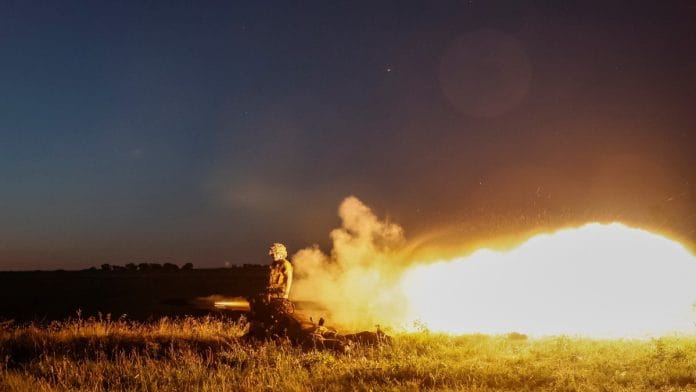New Delhi: In a move that could escalate tensions in the Russia-Ukraine conflict, the US and the UK are reportedly considering Kyiv’s request to lift restrictions on the use of the long-range air-to-surface Storm Shadow missiles, also known as Scalp, to hit targets on Russian territory.
Reports of the possible use of the missiles, which India has also integrated with the Rafale fighters, have drawn a sharp reaction from Russian President Vladimir Putin, who has raised the tactical nuclear bogey again.
He warned that such a move would lead to a direct escalation, and signal the involvement of the North Atlantic Treaty Organisation (NATO) in the ongoing war between the two countries.
Washington has till now been reluctant to provide long-range weapons to Ukraine despite repeated requests by President Volodymyr Zelenskyy for this exact reason — that the war between the two neighbours would spill out of its current confines, pulling the US and its NATO allies into a direct confrontation with Russia.
On Wednesday, The Times reported that both British Foreign Secretary David Lammy and US Secretary of State Antony Blinken, after meeting with Zelenskyy in Kyiv, said they would brief their respective leaders on the “operational details” of Ukraine’s use of weapons like the Storm Shadow missiles.
Deep-strike weapons
The Storm Shadow missiles, manufactured by European defence major MBDA, are air-launched long-range, conventionally armed, deep-strike weapons, designed to meet the demanding requirements of pre-planned attacks against high-value fixed or stationary targets.
The missiles, which have a range of nearly 500 km, are designed to penetrate fortified bunkers and ammunition stores and damage airfields with high precision.
It was developed in an Anglo-French collaboration, and manufactured by a joint venture that also included Italy and used components supplied by the US. This means that all four countries will have to sign off on the export of these missiles.
The UK first sent Storm Shadow missiles to Ukraine in May 2023. It is not clear how many of these missiles are in Ukraine’s possession.
For now, their use has been restricted to only occupied territory. However, now if the UK and the US lift the restrictions, Ukraine will be able to conduct strikes inside Russia, including key military sites in areas like Kursk, Millerovo, and Rostov.
Zelenskyy has repeatedly urged Western allies to allow the use of these long-range missiles within Russian territory to disrupt Moscow’s military operations. Ukraine wants to use these to destroy Russian air bases and bomber fleets along with ammunition depots and control centres. Storm Shadow missiles were put into operations with the Royal Air Force and the French Air Force in 2003 and used in the Gulf, Iraq and Libya.
On Friday, Moscow’s UN ambassador warned the Security Council that easing missile restrictions would escalate the conflict into a “direct war” between Moscow and NATO. Meanwhile, US officials accused Putin of attempting to intimidate NATO countries into withdrawing support for Ukraine.
European leaders have downplayed Putin’s threats, with Polish Prime Minister Donald Tusk saying, “I wouldn’t place too much significance on President Putin’s latest remarks. They mostly reflect the difficult situation Russia is facing on the battlefield,” The Guardian reported.
(Edited by Sanya Mathur)
Also Read: India’s ‘endeavour’ is to see Ukraine-Russia conflict move to negotiating table, says Jaishankar






